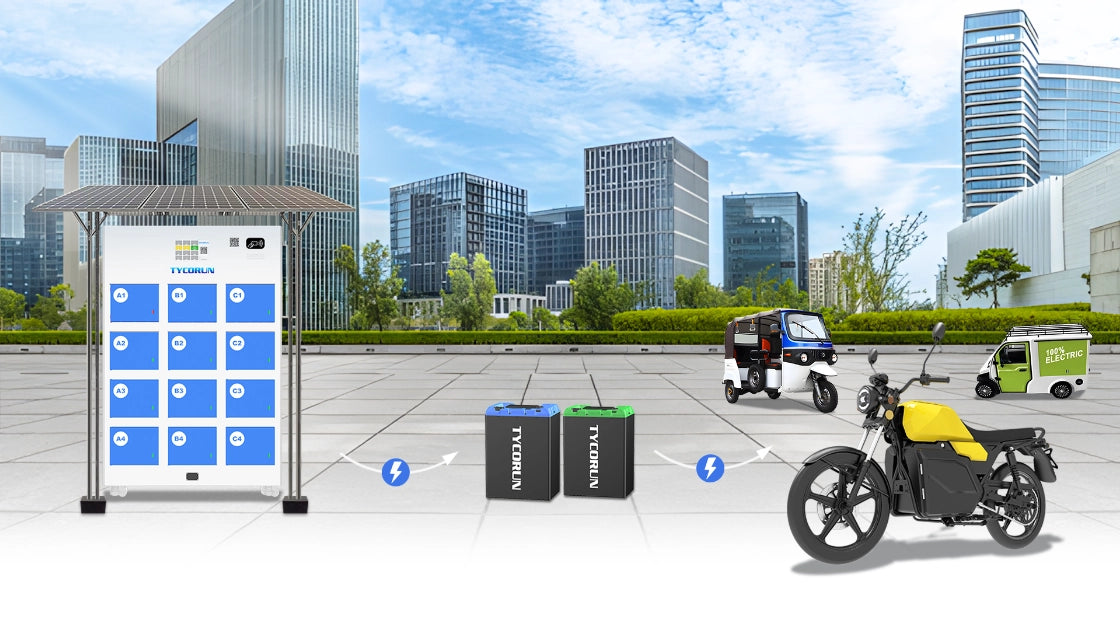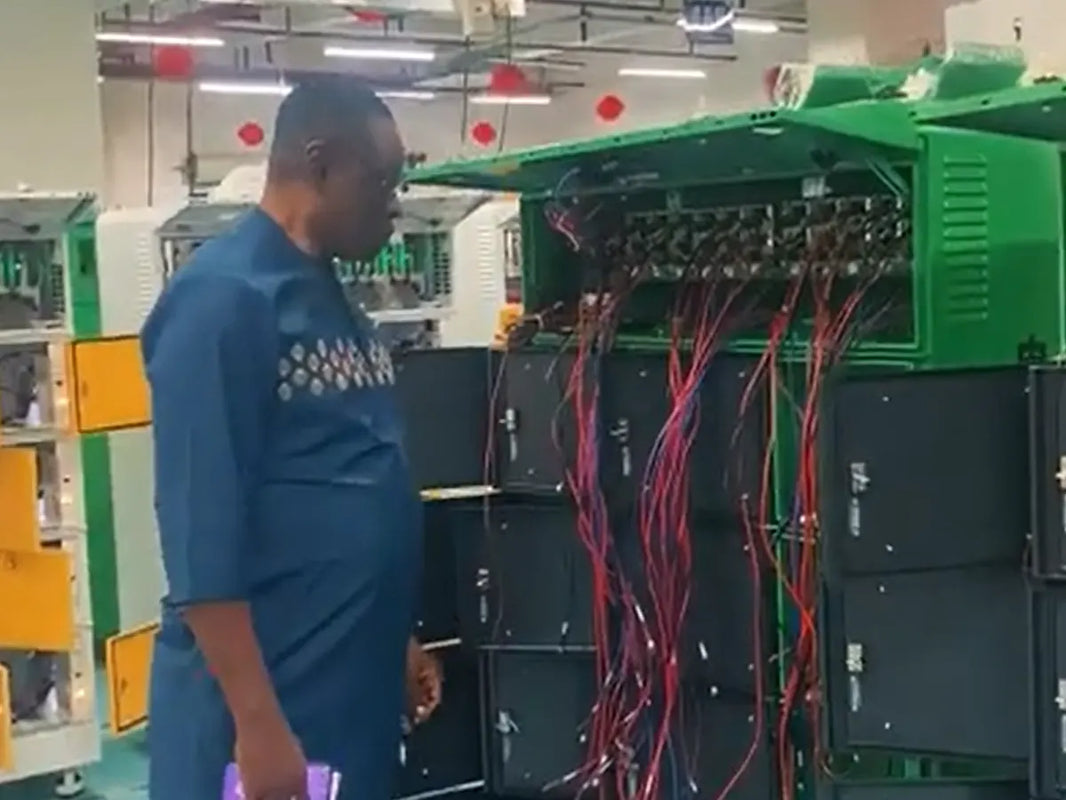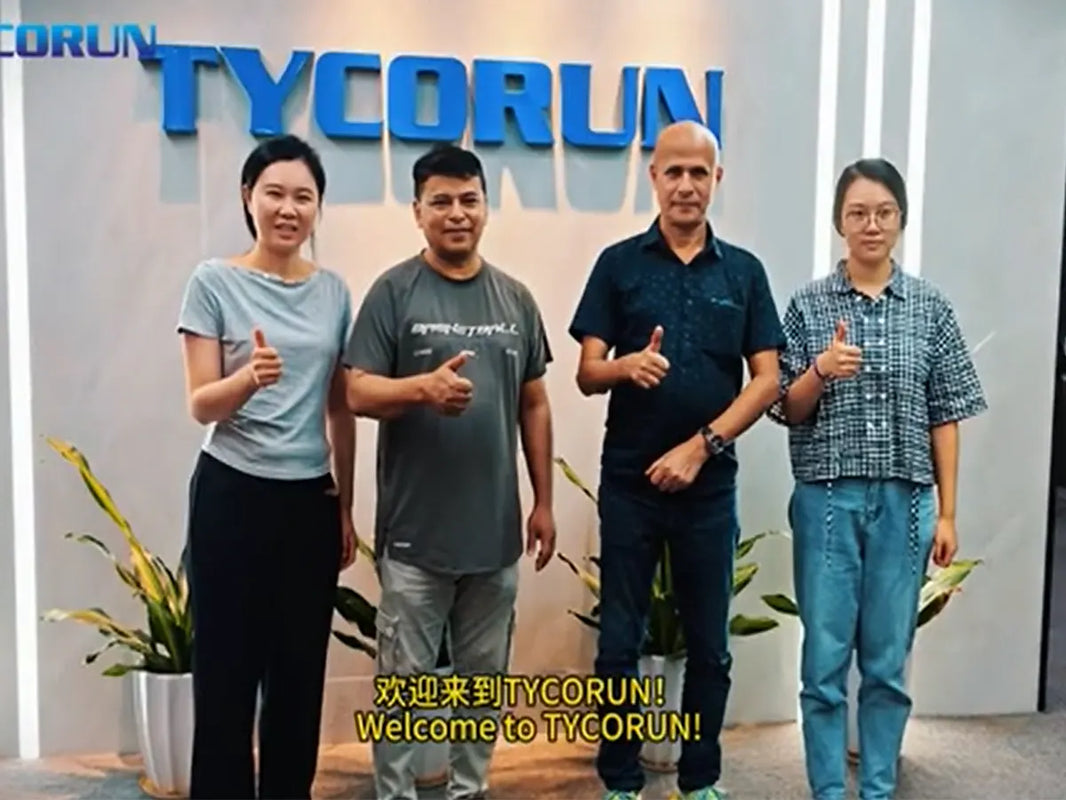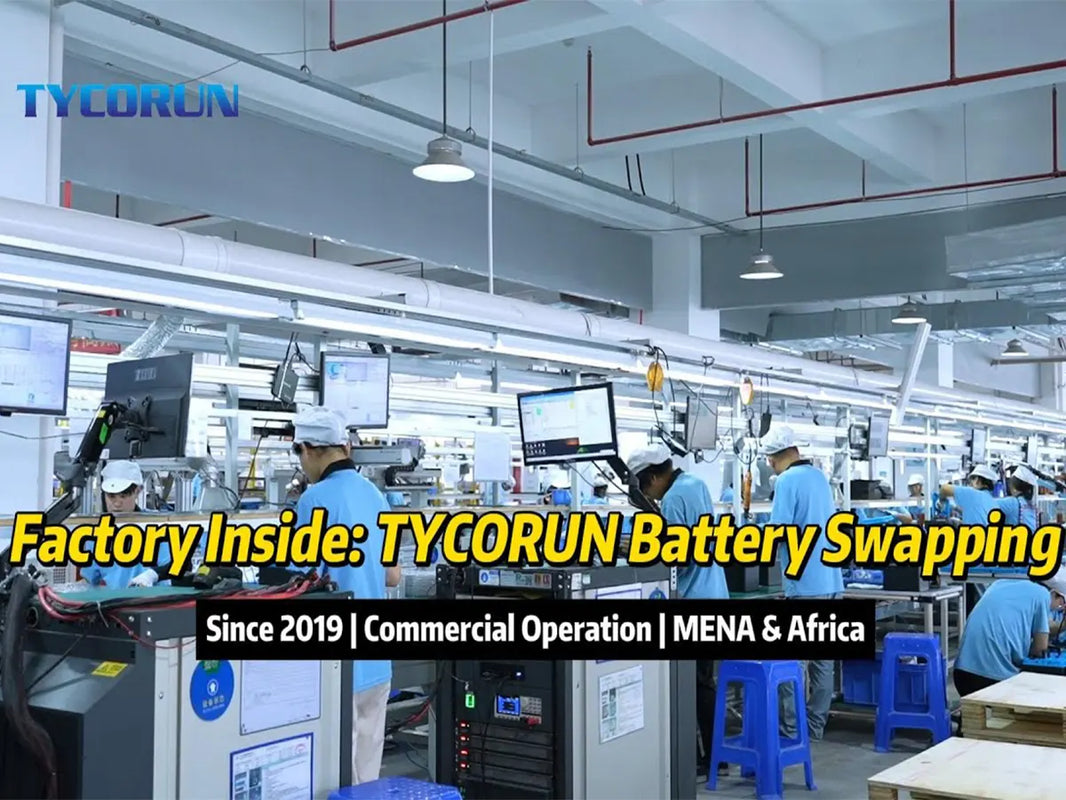
Main content:
- Why It's Important to Wash Your Motorcycle
- DOS When Cleaning Your Motorcycle
- Don'ts When Cleaning Your Motorcycle
- Step-by-Step Guide: How To Wash A Motorcycle Safely
- How Often Should You Wash Your Motorcycle?
- Pro Tips for a Perfect Finish
- The TYCORUN Advantage: Easier Cleaning with Electric Design
- Conclusion
No matter what kind of motorcycle you ride — electric or gas-powered — one thing is guaranteed: it’s going to get dirty. Whether it’s dust from daily commutes, mud from countryside rides, or road grime after rain, your motorcycle deserves proper care to keep it looking sharp and running well.
Knowing how to wash a motorcycle correctly is an important part of motorcycle maintenance. While it might seem simple, washing your bike the wrong way can lead to scratches, corrosion, or even damage to sensitive components. That’s why it’s worth learning the right techniques, tools, and steps before you grab the bucket and sponge.
In this article, TYCORUN explains the essential dos and don’ts of cleaning your motorcycle safely and effectively. Follow these tips, and you’ll not only keep your ride shining but also extend its lifespan and performance.
Why It's Important to Wash Your Motorcycle

Many riders view cleaning as just a cosmetic chore, but it’s much more than that. Regular washing helps remove road salt, dirt, oil, and grime that can corrode metal parts or dull your paint over time. For electric motorcycles like those from TYCORUN, proper cleaning also keeps the cooling system and electrical components working efficiently.
Understanding how to wash a motorcycle correctly means protecting your investment. Clean bikes not only look great but also reveal early signs of wear or leaks that may need attention. Let's explore the best ways to wash your bike — and what mistakes to avoid.
DOS When Cleaning Your Motorcycle

- Use Two Buckets of Water
One of the simplest but most effective cleaning techniques is the two-bucket method. Using only one bucket means dirt and grit from your cloth will mix back into the water, scratching your motorcycle’s paint.
Instead, prepare two buckets:
Bucket 1: Fill with water and a proper motorcycle shampoo.
Bucket 2: Fill with clean water only.
Each time you rinse your cloth or sponge, do it in the clean-water bucket before dipping it back into the soapy one. This keeps the cleaning water fresh and reduces the chance of spreading grime across your motorcycle’s surface.
Pro Tip: Always use a microfiber cloth. It’s soft, highly absorbent, and gentle on the paint. It won’t scratch delicate finishes and helps dry your motorcycle faster.
- Wash in the Shade
While washing your motorcycle under direct sunlight may seem convenient, it’s not ideal. Heat from the sun can cause soap or shampoo to dry too quickly, leaving streaks or water spots on the paintwork.
Find a shaded area like a garage, carport, or under a tree. This gives you more control and helps ensure the soap works effectively before rinsing. Proper lighting also allows you to see dirt more clearly, helping you achieve a spotless finish.
- Take Your Time
Washing a motorcycle isn't something to rush. Taking your time ensures every part of the bike gets proper care — from the mirrors to the wheels. Moving too fast can leave dirt behind, miss critical areas, or even damage fragile parts like sensors and connectors.
A detailed cleaning session is an act of care. It gives you the chance to inspect your motorcycle closely and spot any loose bolts, oil leaks, or chain issues before they become big problems. Remember, learning how to wash a motorcycle properly is part of responsible bike ownership.
- Clean the Chain and Re-Lube It
Your chain works hard and picks up plenty of grime from the road. After washing your bike, clean the chain using a specific chain cleaner or degreaser. Once the bike is completely dry, apply a good-quality chain lubricant.
Re-lubing after a wash is crucial because water can wash away necessary grease, leading to rust and increased friction. Regular chain maintenance helps extend the life of both your chain and sprockets.
- Apply Wax for Extra Shine and Protection
If you want your motorcycle to have that showroom sparkle, finish with a coat of wax. Wax not only enhances the bike’s shine but also adds a protective layer that repels dust and water.
Whether you ride through the city or country roads, waxing your motorcycle regularly protects against UV rays, minor scratches, and road debris. Think of it as armor for your paint job.
Don'ts When Cleaning Your Motorcycle

- Use Household Detergents or Car Shampoo
It's tempting to grab whatever cleaning product is nearby, but resist that urge. Detergents, dish soaps, or car shampoos can strip away your bike’s protective wax layer and damage delicate materials.
Motorcycles require cleaners made specifically for their finishes and parts. TYCORUN recommends using motorcycle-safe shampoos that are gentle yet effective at breaking down grease and grime without harming paint, rubber, or metal.
- Wash Right After a Ride
If your motorcycle looks filthy after a long trip, don’t rush to wash it immediately. Hot metal surfaces, like the engine or exhaust, can crack or warp when exposed to cold water.
Let your bike cool down first. This is especially important for gas motorcycles. However, for TYCORUN electric motorcycles, you won’t have to wait as long since their components run cooler and feature advanced liquid-cooled systems designed to manage temperature efficiently.
So, give your motorcycle a few minutes to rest before beginning your wash — both for your safety and your bike's.
- Attack Stuck Bugs Too Harshly
Bugs stuck to your front fairing or headlights are common after rides, especially at high speeds. But scrubbing them off aggressively can damage the paint.
Instead, soak the affected area with warm water or a bug-remover solution for a few minutes. This softens the debris, making it easier to wipe away without scratching. Patience is key when learning how to wash a motorcycle properly — especially when dealing with tough spots like dried mud or insect remains.
- Don't Use a Pressure Washer
A pressure washer may seem like a quick fix, but it’s risky. High-pressure water can force moisture into areas that should stay dry, like electrical connectors, bearings, and seals. It can also strip away protective coatings or damage paintwork.
Instead, use a standard garden hose with adjustable pressure. A gentle stream of water is enough to rinse off soap and dirt without harming your motorcycle.
TYCORUN electric motorcycles, for instance, are built with IP67-rated components, meaning they’re highly resistant to dust and water intrusion. Even so, using controlled water pressure is always the safer option to preserve your bike’s integrity.
- Don't Take It to a Car Wash
Car washes are designed for larger vehicles and often use harsh brushes or high-pressure systems. These can scratch the paint or damage sensitive motorcycle parts. Motorcycles need a hands-on approach — and learning how to wash a motorcycle yourself ensures it’s done right.
If you’re short on time, consider a professional motorcycle detailing service instead. They use proper tools and products specifically designed for two-wheelers.
Step-by-Step Guide: How To Wash A Motorcycle Safely
Keeping your electric motorcycle clean isn’t just about appearance — it’s essential for performance and longevity. Dirt and grime can affect both the look and efficiency of your ride if ignored. In this section, you’ll learn step-by-step how to wash a motorcycle, especially an electric one, from preparation to drying and lubrication, to keep it looking great and running smoothly.
1. Prepare Your Motorcycle
- Turn off the power: Make sure the motorcycle is completely switched off before cleaning to prevent any electrical or mechanical damage.
- Remove the electric motorcycle battery (if possible): If your motorcycle has a removable battery like Tycorun which has e-motorcycle with swappabel battery, take it out to clean more safely and thoroughly.
- Protect electrical parts: Cover the charging port and other exposed connectors with a plug or tape to keep water out.
- Avoid high pressure: Skip the pressure washer. Strong water jets can push moisture into delicate areas and damage seals. Instead, use a regular hose with a gentle water flow.
2. Washing and Rinsing
- Start with a rinse: Gently rinse the whole motorcycle using low-pressure water to loosen and remove dirt or dust.
- Add soap: Prepare a mix of warm water and mild soap or use a cleaner made specifically for motorcycles.
- Clean the body: Dip a sponge or soft microfiber cloth into the soapy water and carefully wipe down the entire frame. Use a soft brush for narrow or tricky spots.
- Degrease the chain and drivetrain: Apply a motorcycle-safe degreaser to the chain and sprockets, then scrub off the grime using a chain brush.
- Clean the wheels and tires: Use the same soapy water and a brush to scrub the rims and tires gently.
- Rinse thoroughly: Go over the bike once more with clean, low-pressure water to remove all traces of soap and dirt.
3. Drying and Lubricating
- Dry the motorcycle completely: Use a clean, dry microfiber towel to remove any moisture, paying close attention to the chain, battery area, and electrical components.
- Lubricate the chain: Once everything is dry, apply a quality chain lubricant while rotating the wheel to evenly coat all moving parts and prevent rust or friction.
How Often Should You Wash Your Motorcycle?
There’s no single rule for how frequently you should wash your motorcycle. Some riders clean theirs weekly, while others do it every two weeks or after long rides. The best schedule depends on your local climate, road conditions, and how often you ride.
If you often ride in dusty or rainy areas, more frequent washing will help prevent corrosion and dirt buildup. Electric motorcycles from TYCORUN typically require less cleaning because they lack exposed engine parts and exhaust systems that trap grime.
Pro Tips for a Perfect Finish
Here are some bonus tips from the experts at TYCORUN:
- Use separate cloths for different parts: Have one for bodywork and another for wheels and chain.
- Avoid circular motions: Wipe in straight lines to reduce swirl marks.
- Check for water traps: Areas like under the seat or around the mirrors can hold moisture. Dry them carefully.
- Use silicone spray: For rubber and plastic parts, silicone spray restores shine and prevents fading.
- Inspect while cleaning: Look out for loose bolts, cracked wires, or rust. Cleaning time doubles as inspection time.
Mastering how to wash a motorcycle doesn’t just keep it beautiful — it keeps it reliable.
The TYCORUN Advantage: Easier Cleaning with Electric Design
One big advantage of owning a TYCORUN electric motorcycle is its low-maintenance design. Unlike traditional gas motorcycles that require extra caution around the exhaust and carburetor, TYCORUN bikes are built with sealed systems and high waterproof ratings.

This means fewer worries about water damage and easier cleaning overall. The absence of engine oil, air filters, or fuel residues also simplifies maintenance. All you need to do is follow safe washing practices, and your TYCORUN motorcycle will stay in top condition for years.
Conclusion
Once your motorcycle is sparkling clean, take a step back and admire your work. There’s no better reward than hitting the road on a freshly washed bike. Not only does it look great, but it also runs better and lasts longer when cared for properly.
Learning how to wash a motorcycle isn’t just about keeping it clean — it’s about respecting the machine that takes you on countless adventures.
So, grab your buckets, take your time, and let every wash be an act of appreciation for your two-wheeled companion. And remember, with TYCORUN electric motorcycles, cleaning and maintenance are easier than ever — giving you more time for what really matters: riding.
Related Articles: Best mileage motorcycle, Best motorcycle tires, Motorcycle helmets,
















